Introduction
Kelp, a nutrient-rich seaweed widely consumed in Asian cuisines, has gained global recognition for its unique umami flavor and impressive health benefits. When combined with the tangy depth of black vinegar, it transforms into a refreshing, probiotic-rich dish that tantalizes the taste buds while nourishing the body. This guide delves into the intricacies of preparing kelp pickled in black vinegar, a traditional recipe that bridges culinary artistry and holistic wellness. Whether you’re a seasoned chef or a curious home cook, this article will equip you with the knowledge to craft this dish to perfection.
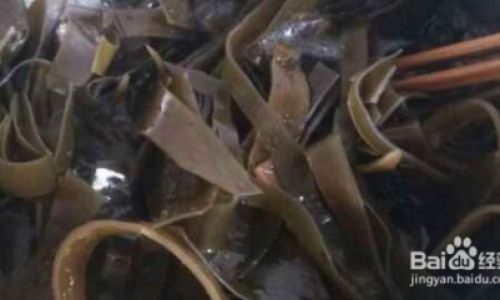
What Makes Kelp and Black Vinegar a Dynamic Duo?
Before diving into the recipe, it’s essential to understand the synergy between these two ingredients. Kelp, scientifically known as Saccharina japonica, is a marine algae packed with iodine, iron, calcium, and dietary fiber. It supports thyroid function, aids digestion, and promotes detoxification. Black vinegar, a staple in Chinese and Japanese condiments, is aged for months or years, resulting in a complex flavor profile—sweet, sour, and slightly smoky. Its acidic nature not only tenderizes the kelp but also enhances nutrient absorption, making this pairing a nutritional powerhouse.
Ingredients: The Foundation of Flavor
To embark on this culinary journey, gather the following ingredients. Each component plays a pivotal role in achieving the perfect balance of taste and texture:
- Dried Kelp (Kombu): 100 grams (preferably organic, unsulfured).
- Black Vinegar: 1 cup (Chinese Zhenjiang vinegar or Japanese Kurozu recommended).
- Water: 2 cups (filtered or spring water for purity).
- Sugar: 2–3 tablespoons (coconut, brown, or cane sugar for depth).
- Salt: 1 teaspoon (sea salt or Himalayan pink salt).
- Aromatics (optional): 2 garlic cloves (sliced), 1-inch ginger (julienned), or 1 dried chili (for heat).
- Sweetener Alternative: 1–2 tablespoons honey or maple syrup (vegan option).
- Sesame Oil: 1 teaspoon (toasted, for garnish).
- Sesame Seeds: 1 teaspoon (toasted, for garnish).
Equipment Checklist
- A medium-sized glass jar with an airtight lid (avoid metal, as it may react with vinegar).
- A large pot for boiling water.
- A colander or slotted spoon.
- Cutting board and knife.
Step-by-Step Preparation Guide
Rehydrating the Kelp
- Rinse: Place the dried kelp under cold running water to remove salt or debris.
- Soak: Submerge the kelp in a bowl of water for 20–30 minutes until pliable. This step revives its texture and reduces excess saltiness.
- Trim: Using kitchen shears, cut the kelp into 2-inch strips or bite-sized pieces. Discard any tough stems.
Blanching for Tenderness
- Boil: Fill a pot with water and bring it to a rolling boil. Add the kelp and blanch for 2–3 minutes. This process softens the kelp, eliminates fishy odors, and preserves its vibrant green hue.
- Shock: Immediately transfer the blanched kelp to an ice bath to halt cooking. Drain thoroughly.
Preparing the Pickling Brine
- Combine: In a saucepan, mix the black vinegar, water, sugar, salt, and any optional aromatics.
- Simmer: Heat the mixture over medium heat until the sugar dissolves (3–5 minutes). Avoid boiling to prevent alcohol evaporation (if using unpasteurized vinegar).
- Cool: Let the brine cool to room temperature. This ensures the kelp absorbs flavors without overcooking.
Assembling the Pickle
- Layer: Arrange the blanched kelp in the glass jar, alternating with garlic, ginger, or chili if desired.
- Pour: Fill the jar with the cooled brine, ensuring the kelp is fully submerged. Leave ½ inch of headspace to prevent spillage during fermentation.
- Seal: Close the lid tightly and shake gently to distribute ingredients.
Fermentation and Aging
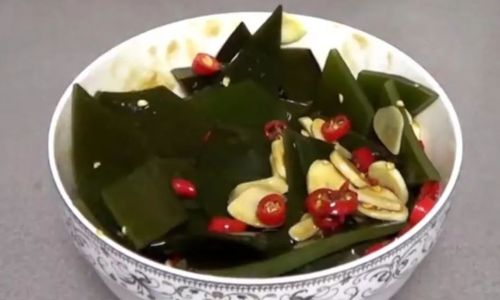
- Store: Place the jar in a cool, dark place (pantry or refrigerator) for 24–48 hours. This allows the vinegar to penetrate the kelp, mellowing its brininess.
- Taste Test: After 24 hours, sample a piece. If the flavor is too sharp, let it ferment longer. For a milder taste, refrigerate immediately.
Final Touches
- Garnish: Before serving, drizzle with sesame oil and sprinkle sesame seeds for a nutty finish.
- Adjust: Add a splash of soy sauce or a pinch of red pepper flakes for umami or heat.
Variations and Customizations
The beauty of this recipe lies in its adaptability. Experiment with these twists to suit your palate:
- Spicy Kick: Add sliced Fresno peppers or a dash of Sriracha to the brine.
- Citrus Zing: Infuse the brine with lemon zest or yuzu juice for a bright finish.
- Sweet-and-Sour Profile: Increase sugar to ¼ cup and add a star anise pod during simmering.
- Vegan-Friendly: Substitute honey with agave syrup or date molasses.
- Quick Version: Skip fermentation and serve chilled after 2 hours of marinating.
Storage and Shelf Life
- Refrigeration: The pickle lasts up to 3 weeks when stored below 40°F (4°C).
- Freezing: Not recommended, as freezing alters the kelp’s texture.
- Signs of Spoilage: Discard if the brine turns cloudy, or the kelp develops an off odor.
Health Benefits: More Than Just Flavor
Beyond its culinary appeal, this dish offers a myriad of health perks:
- Thyroid Support: Kelp’s iodine content regulates hormone production.
- Digestive Aid: Black vinegar’s acetic acid promotes gut health by balancing pH levels.
- Antioxidant Boost: Both ingredients combat oxidative stress, reducing inflammation.
- Weight Management: The combination of fiber and vinegar may curb appetite and stabilize blood sugar.
Serving Suggestions
Elevate your meals with these creative pairings:
- As a Side Dish: Serve alongside grilled fish, rice bowls, or stir-fried vegetables.
- In Salads: Toss with cucumber, cherry tomatoes, and avocado for a refreshing salad.
- As a Condiment: Chop finely and mix into tuna salad or egg mayo sandwiches.
- With Noodles: Drizzle over cold soba noodles or ramen for a tangy twist.
Troubleshooting Common Issues
- Mushy Kelp: Overblanching causes texture breakdown. Stick to 3 minutes max.
- Bitter Aftertaste: Rinse the kelp thoroughly after soaking to remove excess salt.
- Dull Flavor: Ensure the brine is fully cooled before adding to the kelp. Heat can mute flavors.
- Cloudy Brine: Use filtered water and sterilized jars to prevent bacterial growth.
Cultural Significance
In East Asian traditions, pickled kelp symbolizes longevity and resilience—a nod to the seaweed’s ability to thrive in harsh conditions. During festivals like Lunar New Year, it’s served as a good-luck charm, believed to ward off illness and invite prosperity.
Conclusion
Mastering the art of kelp pickled in black vinegar is a journey that rewards patience and creativity. This dish transcends mere sustenance, embodying a fusion of flavor, tradition, and wellness. Whether you’re seeking to elevate your home cooking or explore the wonders of fermentation, this recipe offers a gateway to culinary mastery. Experiment, savor, and let the ocean’s bounty enrich your table.
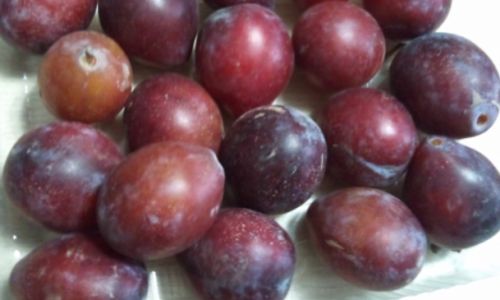
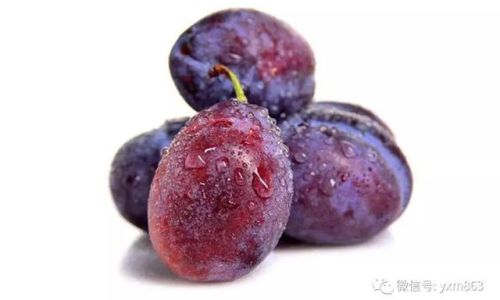
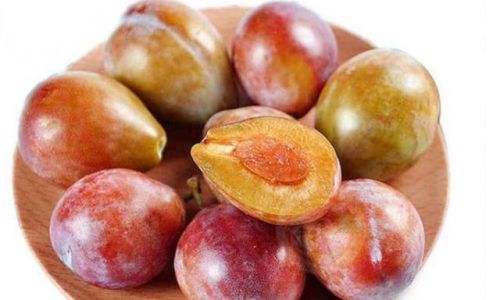
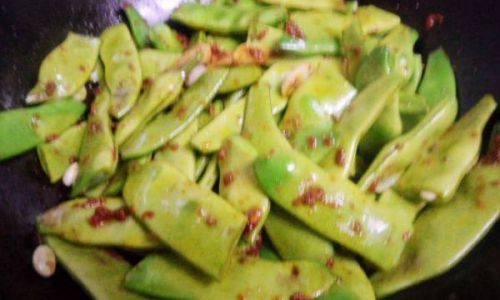
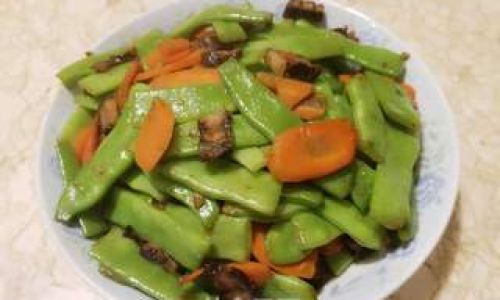
0 comments